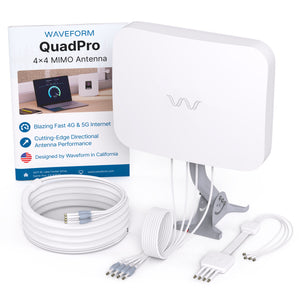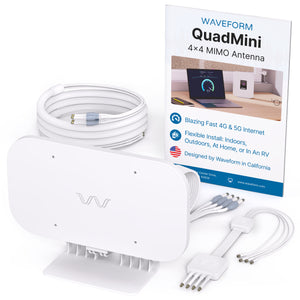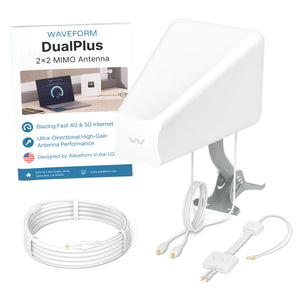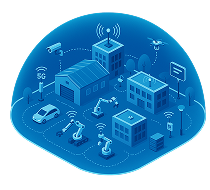Report Highlights
- 57.7% of the US workforce recently started working from home due to coronavirus
- Of those who are employed and didn’t work from home already, 57.7% reported that they had recently begun working from home due to the COVID-19 pandemic.
- Many newly remote employees enjoy working from home and wish it were permanent
- 60.4% of respondents who are newly working from home due to COVID-19 said they prefer working from home, and 48.9% of respondents wish that it was a permanent change.
- Newly remote employees report they are getting less done
- 33.8% of respondents said they were getting less done while working from home. 25% said they were getting more done.
- Over 10 million US employees working from home due to COVID-19 suffer from poor cell signal coverage and daily Internet connectivity issues at home
- In our survey, 15.5% of Americans said they had issues with Internet connectivity daily. 12.5% of respondents reported experiencing bad or very bad cell signal reception in their home.
- 50% of Americans are disinfecting their cell phones regularly to prevent the spread of COVID-19
- By contrast, 37.7% of respondents reported never or very rarely disinfecting their cell phones to prevent the spread of coronavirus.
About this Report
The United States now has more cases of COVID-19 than any other country in the world. The pandemic is having a huge impact on the daily lives of millions of Americans, forcing many to “shelter in place.”
This has resulted in the largest experiment with remote work that has ever occurred in US history. This has affected our business directly: we’ve seen a 200% increase in demand for cell signal boosters. We wanted to understand exactly what kinds of issues employees are experiencing with Internet connectivity now that they’re working remotely.
About Waveform:
Founded in 2007, Waveform is a leading online reseller of cell phone signal boosters, small cells, and a systems integrator of in-building active and passive distributed antenna systems. The company has worked with over 20,000 customers to improve cell service in buildings of all sizes.
Survey Methodology:
We commissioned an online survey of 1,065 American adults on March 30th by SurveyMonkey, using their gender and age-normalized panel to represent the wider American population. The survey was aimed at better understanding people’s experiences of Internet connectivity while working from home. The results reflect a nationally representative sample, with a confidence interval of 3% (except where a susbet of respondents were included). More information about SurveyMonkey’s online survey methodology is available here.
Part 1: Working from Home
We first wanted to establish what percentage of Americans have recently started working from home. We removed the cohort whose responses indicated that they either already worked from home, were unemployed, or retired, and found that 57.1% of respondents with a full-time, non-remote job recently started working from home due to the COVID-19 outbreak.
There are approximately 150 million people in the US workforce. Extrapolating the results of our survey out to the larger population, we can estimate that around 85 million people are now working from home due to Coronavirus.
Breaking down these results by age, we found that younger age groups were more likely to have recently started working from home due to the COVID-19 pandemic.

We also wanted to know how Americans felt their productivity levels had changed as a result of working from home. Our results show that many people feel like they’re getting less done now than when they went to their regular workplace.

We were a little surprised to find that many are relishing the opportunity to work from home. A majority of respondents said that they prefer working from home, and a plurality said that they wish they could permanently work from home instead of their regular workplace.
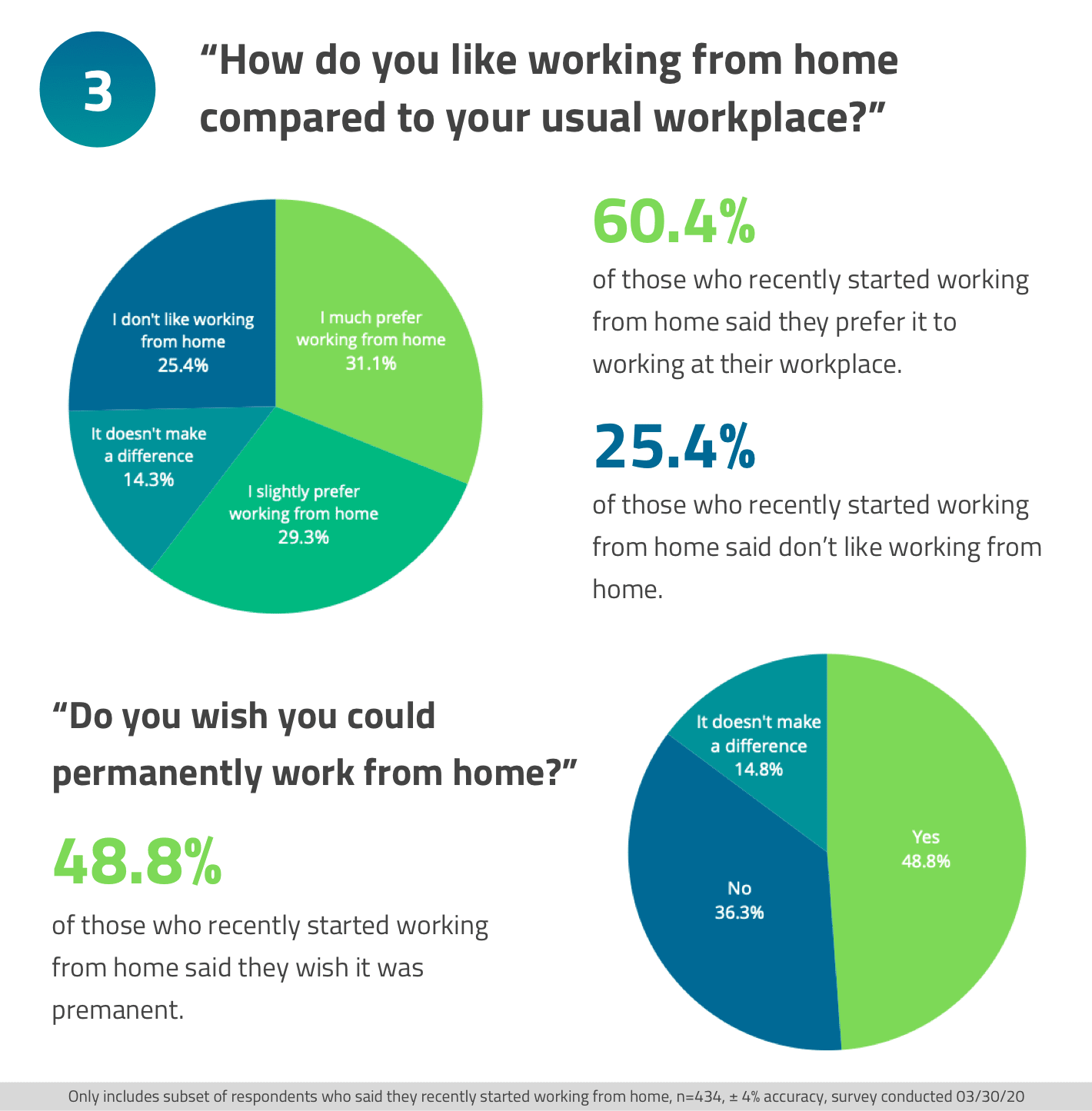
Part 2: Internet and Cell Service
Working from home means relying on internet and cellular connectivity. We’ve noticed a large uptick in the number of users purchasing cell phone signal boosters from us in the last two weeks, as a newly remote workforce struggles to stay connected from home.
To dig into this, we asked consumers about their cell signal levels at home. 12.5% of respondents said they had “bad” or “very bad” signal at home. Those figures show no change from an identical question that was asked in our October 2018 report.
Comparing the data to our previous report, 11.0% fewer users reported having “very good signal” at home - a significant decline compared to the 2018 report. Overall, users are less satisfied with their cell signal at home compared to two years ago.
We can extrapolate this out to the larger population: of the ~85 million people working from home due to Coronavirus, around 10.6 million have poor cell signal at home.
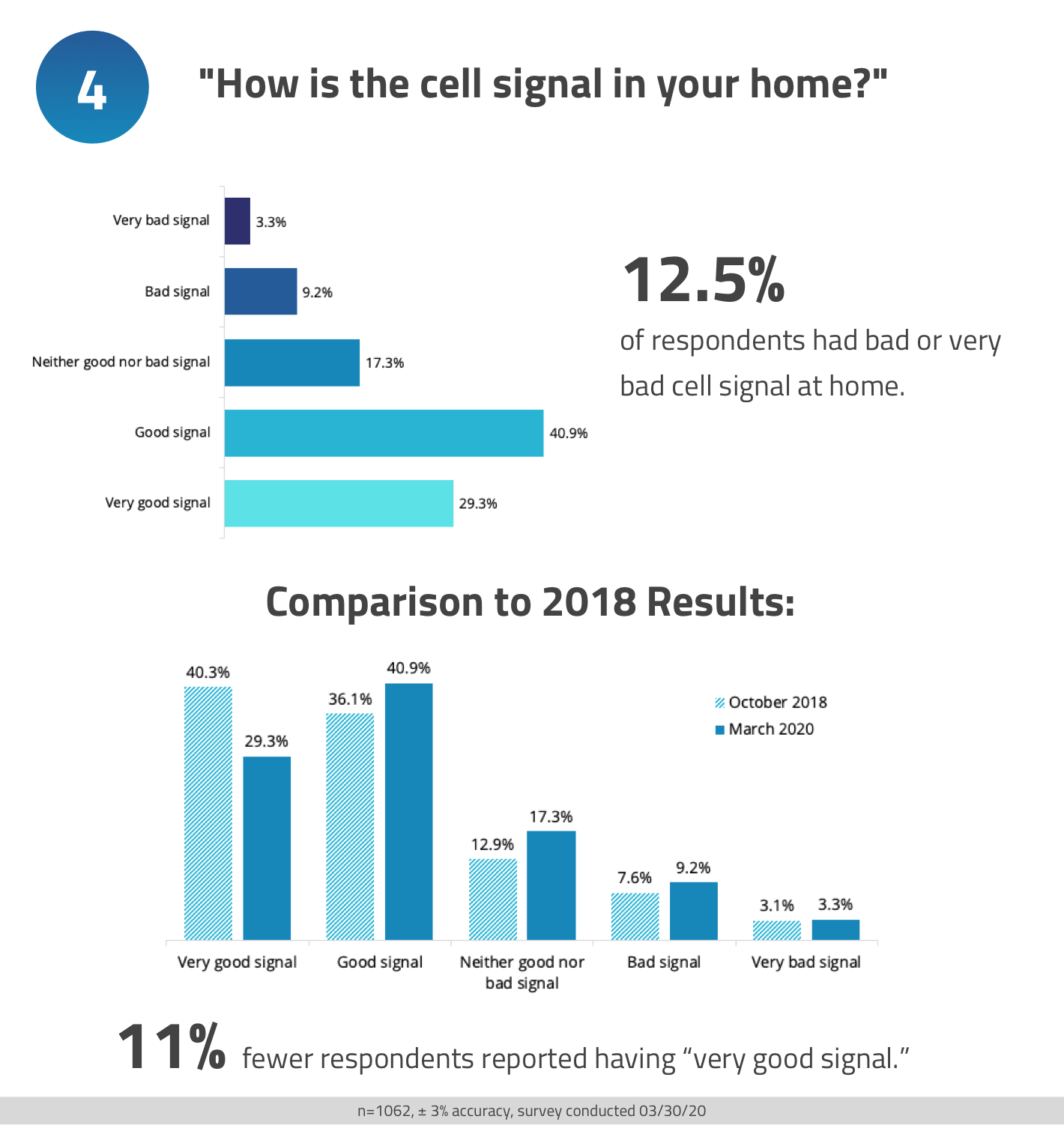
Over the past two weeks, we’ve noticed a pattern: many of the consumers reaching out to us aren’t just looking for voice coverage. They’re specifically looking to use LTE as an alternative or replacement to their home broadband.
We wanted to find out exactly what percentage of users are experiencing issues with Internet connectivity while working from home. The results were surprising: 52.9% of respondents reported Internet connectivity issues at least once a month, while 15.5% of respondents experienced issues on a daily basis.
We can extrapolate this out to the larger population: of the ~85 million people working from home due to Coronavirus, around 13.2 million are experiencing daily Internet connectivity issues.

Part 3: Phones and Coronavirus
One last question was suggested by one of our team members. They’d become specifically concerned about friends and family not sanitizing their phones after leaving the house to visit grocery stores or other potentially compromised locations.

We asked what percentage of people were disinfecting their phones, and found that 37.7% of Americans have at most disinfected their phones once or twice. 49.8% of Americans, however, are disinfecting their cell phones daily or every time they return home.
Further reading
Past Reports:
Guides
At Waveform, we pride ourselves on writing the most detailed, technical guides on everything related to improving cell signal. Here are just a few of our most popular articles:























